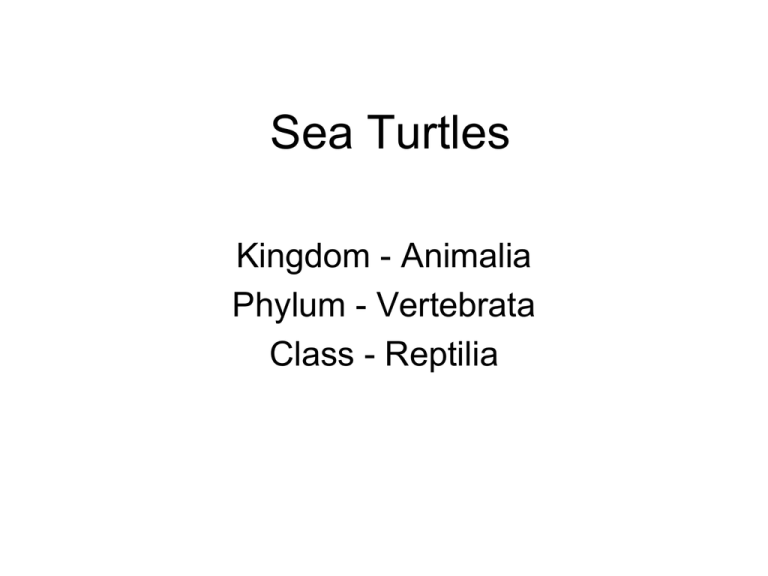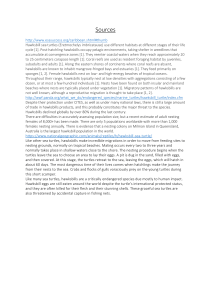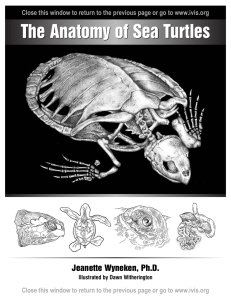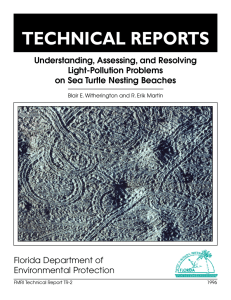Sea Turtles Kingdom - Animalia Phylum - Vertebrata Class - Reptilia
advertisement

Sea Turtles Kingdom - Animalia Phylum - Vertebrata Class - Reptilia • Ectotherms - body temperature varies with the environment • Inhabit - sub tropical and tropical seas • Shells consists of … – Upper carapace-fused to backbone. – Lower Plastron – Hard Scales- (scutes) - cover all but the Leatherbacks – The carapace ranges in length, color, shape (scutes) for each species • • • • • • Cannot retract head into shell like a tortoise Legs are modified into flippers for swimming Jaws are modified into beaks- have no teeth Eardrums are covered by skin- not visible Excellent sense of smell Good vision under water, nearsighted out of water • Streamlined bodies and large flippers make them very well adapted to sea life • The smallest Olive Ridley weighs less than 100lbs., and Leatherbacks range from 6501300lbs. • Females must come ashore to lay eggs in sand. All sea turtles begin life on land as a tiny hatchling. Most research has been done on nesting females and hatchlings because they are easiest to find. Thousands of turtles have been tagged to study growth rates, reproductive cycles, and migration routes. • Females nest at least twice during mating season and as many as ten times. • They always return to the beach where they were born, (natal beach). • Don’t reach sexual maturity until 15 - 50 years and may live to be over 100 years. • Destruction of feeding and nesting habits and pollution caused by human development has taken its toll on sea turtle populations. Many species are in danger of going extinct.




